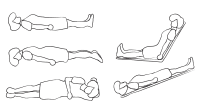The other day I was watching The Murdoch Mysteries, a television show. Set at the turn of the 20th Century, this particular episode focused on the death of Dr. Ogden (the father of series costar Dr. Julia Ogden.) The love of Dr. Ogden’s life killed him with an overdose of opium because he was dying of a dreadful disease that was starting to affect his mind. He asked her to do it because he said he “did not have the courage to do it” himself. A tragedy for them both.
Dr. Ogden’s death was neither painful nor unexpected. His physician rules that he died of natural causes. But Julia insists that Murdoch investigate and, not surprisingly, he discovers the real and immediate cause of death. He asks the gentle elderly lady who administered the overdose if she would do it again, and she answers, “Yes, I rather think that I would.”
I bring this up because physician-assisted suicide of irreversibly dying individuals is a big, though quiet, issue today even in the states where it is legal, which by no means implies that it is not done in other states. What today’s laws —where they exist—permit is for physicians to prescribe, but not to administer, a lethal dose of a narcotic for patients in certain situations. Even in the states where it is legal for physicians to prescribe a legal overdose, it is still illegal for family members, loved ones, or anyone else, to administer the lethal dose. Thus, what has been made legal is for a person who faces imminent death to choose suicide by the easiest, least painful method possible. The key to all this is that the patient chooses a more rapid death, and the patient demonstrates this by giving himself or herself the lethal dose that has been made available by the physician.
Sometimes called “palliative sedation,” many hospices and some ICUs increasingly are using “terminal sedation” as an alternative therapy for irreversibly dying patients who are in significant pain. The American Academy of Hospice and Palliative Medicine defines palliative sedation as “the use of sedating medications…to decrease a patient’s level of consciousness to mitigate the experience of suffering, but not to hasten the end of his or her life.”* The Canadian Guidelines define it as “sedation with continuous IV narcotics and/or sedatives until the patient becomes unconscious and death ensues from the underlying illness [emphasis added], [and] is palliative care, not euthanasia.”
What is important to note is that in the appropriate use of terminal sedation, the patient is sedated, and death ensues from the underlying illness, NOT from the sedation itself. If the patient is sedated and the patient simply dehydrates over several days and dies of circulatory collapse, not the disease process, then the “terminal sedation” is not palliative care, but imposed death—euthanasia. If the patient is truly actively dying, and is then terminally sedated, the patient often does not have time to dehydrate, even though fluids are not being given, and the patient dies as a natural result of the terminal illness.
So the biggest difference between physician-assisted suicide and terminal or palliative sedation is who administers the drug and what is the intent: to induce death or to reduce pain until death occurs from the disease itself and not from the drug or any side effect of the drug (e.g., dehydration). A fine line to draw indeed!
Anyone involved in hospice for any length of time knows that hospice is supposed to neither hasten death nor attempt to cure the underlying terminal illness. And we all know that the American Nurses Association and American Medical Association have taken stands against euthanasia. However, that basic tenet of end-of-life care unwittingly may be replaced by routine: a routine willingness to hasten the patient’s death through various means. And “terminal sedation” is one of the easiest techniques to subvert because it relies so much upon the intent.
If end-of-life care, whether in an ICU or a hospice, is to maintain its integrity, the practice of terminal sedation must be severely restricted to only those clinical situations that demand sedation. If used routinely, it puts us at risk of imposing death upon the patient before the terminal illness would naturally take the patient’s life. Nurses and physicians should think long and hard about where the impetus to use terminal sedation is coming from, for we must now try to judge intent, which seems to be the primary dividing issue. Unless the patient chooses to self-administer the drug, the moral risk is enormous, whether the patient is not at home but in an institution and especially if the care is paid for by those who do not know the patient.**
Please do share your professional and personal perspectives with me and other readers.
*AAHPM position statement on sedation at the end of life. American Academy of Hospice and Palliative Medicine, September 2002.
**I strongly recommend the book End of Life Care: Clinical Practice Guidelines, by Kim K Kuebler and Patricia H. Berry, which details in great depth how to manage numerous scenarios confronting those at the end of life.
Leah Curtin is Executive Editor, Professional Outreach for American Nurse Today.


















